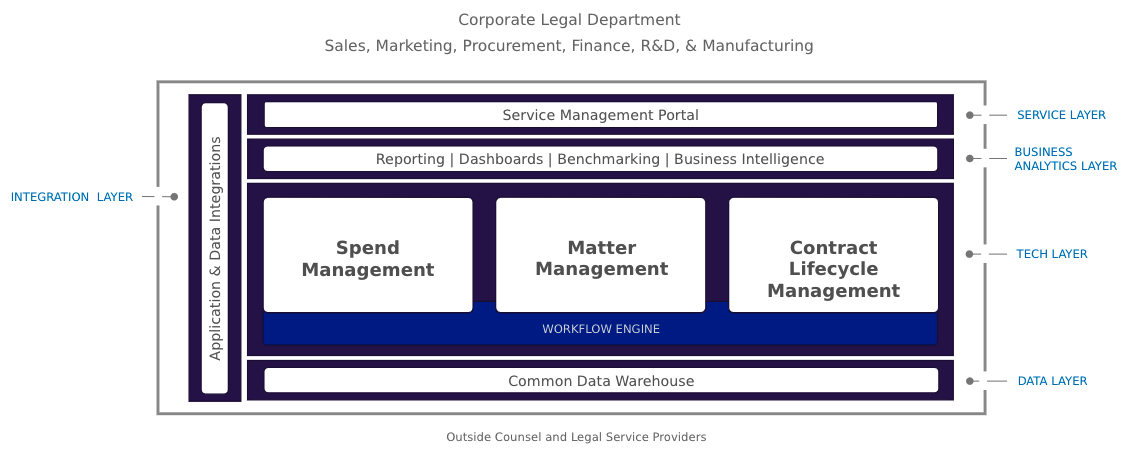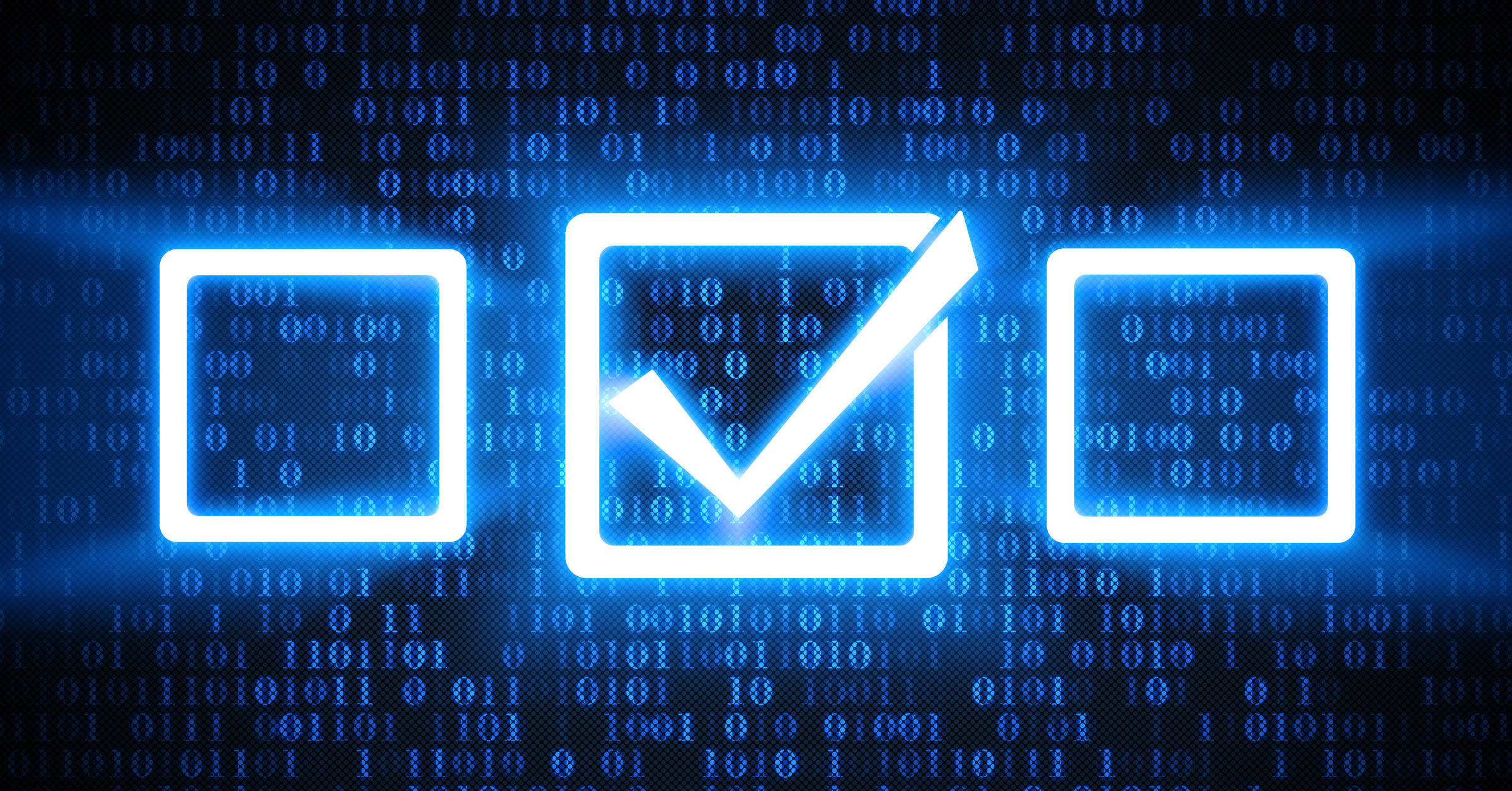In previous blogs, we discussed the mandate for corporate legal departments to optimize their operations and how adopting a platform model can help them do so. In this blog, we help technology buyers or evaluators understand the key elements and characteristics of a modern software platform that supports the management of legal matters and legal-related documents such as contracts and agreements.
The ideal modern platform has five layers to its architecture: service, business analytics, tech, data, and integration.

A Modern Platform Architecture
A service layer is the critical “front door” to legal services for internal clients. It needs to provide a simplified, consumer-like experience to encourage business users to use it versus sending a one-off email or chat to the legal team. Users can either make a legal service request or directly access technology in a self-service manner that addresses their needs. Legal-related services that could populate the service layer include NDA requests, invention disclosures, trademark or logo use requests, whistleblower submissions, and data breach incident reporting.
A business analytics layer provides users with an embedded capability to derive insights from data. While stand-alone analytics tools like Tableau or Microsoft PowerBI are great at doing ad-hoc analysis and reporting, the average business user wants to use insights at the point of need, i.e., during the performance of a workflow. The ideal business analytics layer provides a range of capabilities, such as reporting, dashboards, benchmarking, and legal business intelligence within the platform.
A technology layer includes the software necessary to fulfill a request or automate a workflow. The service layer can provide a skilled user with direct access to the technology layer. For a platform that addresses legal matters and legal-related document requests, the technology layer should ideally include capabilities for matter management, legal spend management, legal holds management, and contract lifecycle management. It should also include an engine to automate collaborative workflows and business processes with sophisticated, custom requirements.
A data layer allows data sharing amongst the different technology layer components. This avoids the double entry of data and provides consistency across datasets, a single source of truth, and the ability to generate consolidated reports and analyze data holistically and more efficiently.
Lastly, an integration layer is a critical connection between the platform and other business applications such as ERP, CRM, and GRC systems. It should also enable connectivity to other data repositories and analytic tools.
While the ideal platform for legal matters and documents solutions has each of these layers, it should also possess several essential characteristics:
- Is configurable to address the needs and circumstances of a large, complex enterprise.
- Provides scalability to support future growth in users and data.
- Is extensible to accommodate new features and capabilities, including integrations with more business applications.
- Can be consumed in a modular fashion that does not require monolithic adoption by a customer.
Addresses security, compliance, and reliability needs.
Please contact us to learn how Onit can provide a modern platform for legal operations.






